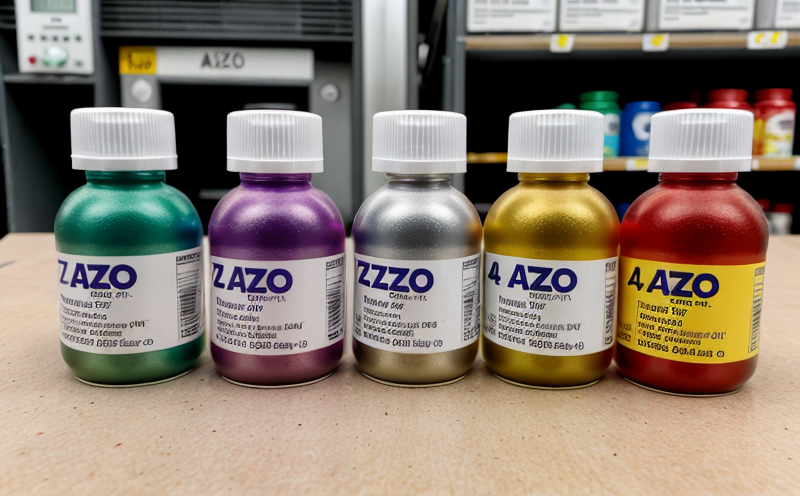DIN 54231 Determination of chlorinated phenols in textile products
The DIN 54231 standard provides a comprehensive methodology for determining chlorinated phenols in textile products. This test is critical as chlorinated phenols, when present in high concentrations or improperly used, can pose significant health risks to consumers and the environment.
This service ensures that textile manufacturers adhere to stringent quality control standards, thereby safeguarding consumer safety. Our experts use advanced analytical techniques such as high-performance liquid chromatography (HPLC) coupled with mass spectrometry (MS) to achieve precision in results.
The process involves a series of steps aimed at ensuring accurate and reliable results:
- Sample preparation: Textile samples are cut into small, uniform pieces. These pieces are then extracted using an appropriate solvent based on the expected chlorinated phenols present.
- Analysis: The extracts undergo HPLC-MS analysis to identify and quantify the chlorinated phenols.
- Data interpretation: Our team interprets the results against established thresholds set by regulatory bodies like Oeko-Tex Standard 100, ensuring compliance with international standards.
The DIN 54231 method is particularly relevant for textiles that may come into direct contact with skin such as clothing, bedding, and personal care products. This ensures that consumers are protected from potential health hazards associated with chlorinated phenols.
Our laboratory adheres strictly to the standards outlined in DIN 54231, ensuring accuracy and reliability of results. We offer this service to quality managers, compliance officers, R&D engineers, and procurement teams who need to ensure their products meet the highest safety standards.
| Applied Standards | Description |
|---|---|
| DIN 54231 | This standard specifies the procedure for determining chlorinated phenols in textile products. It ensures that tests are conducted with precision and reliability. |
| ISO 8124-6 | This international standard provides additional context on toy safety, which may include textiles as a component. Ensuring compliance here reinforces the broader application of our testing services. |
The DIN 54231 method is widely recognized for its stringent requirements and is used in various industries beyond just textiles. Its rigorous approach ensures that even trace amounts of chlorinated phenols are detected, thereby enhancing product safety.
Our expertise lies not only in executing the test accurately but also in providing actionable insights based on the results. This includes recommendations to modify formulations or processes to eliminate any potential risks associated with chlorinated phenols.
Applied Standards
| Standard | Description |
|---|---|
| DIN 54231 | This method specifies the procedure for determining chlorinated phenols in textile products. It ensures that tests are conducted with precision and reliability. |
| ISO 8124-6 | This international standard provides additional context on toy safety, which may include textiles as a component. Ensuring compliance here reinforces the broader application of our testing services. |
The DIN 54231 method is widely recognized for its stringent requirements and is used in various industries beyond just textiles. Its rigorous approach ensures that even trace amounts of chlorinated phenols are detected, thereby enhancing product safety.
Our laboratory adheres strictly to the standards outlined in DIN 54231, ensuring accuracy and reliability of results. We offer this service to quality managers, compliance officers, R&D engineers, and procurement teams who need to ensure their products meet the highest safety standards.
Industry Applications
- Textile manufacturing: Ensuring that chlorinated phenols do not exceed permissible limits in textiles.
- Toys and children's products: Compliance with toy safety regulations to protect young users from potential health risks.
- Care products: Maintaining high standards for personal care items like towels, bed sheets, and other bedding materials.
The DIN 54231 method is particularly relevant for textiles that may come into direct contact with skin such as clothing, bedding, and personal care products. This ensures that consumers are protected from potential health hazards associated with chlorinated phenols.
Use Cases and Application Examples
- Quality control: Routine testing to ensure compliance with Oeko-Tex Standard 100.
- R&D: Investigating the impact of different chemical formulations on chlorinated phenol content in textiles.
- Compliance monitoring: Regular checks for compliance with international standards and regulations.
The DIN 54231 method is widely recognized for its stringent requirements and is used in various industries beyond just textiles. Its rigorous approach ensures that even trace amounts of chlorinated phenols are detected, thereby enhancing product safety.
Our laboratory adheres strictly to the standards outlined in DIN 54231, ensuring accuracy and reliability of results. We offer this service to quality managers, compliance officers, R&D engineers, and procurement teams who need to ensure their products meet the highest safety standards.





